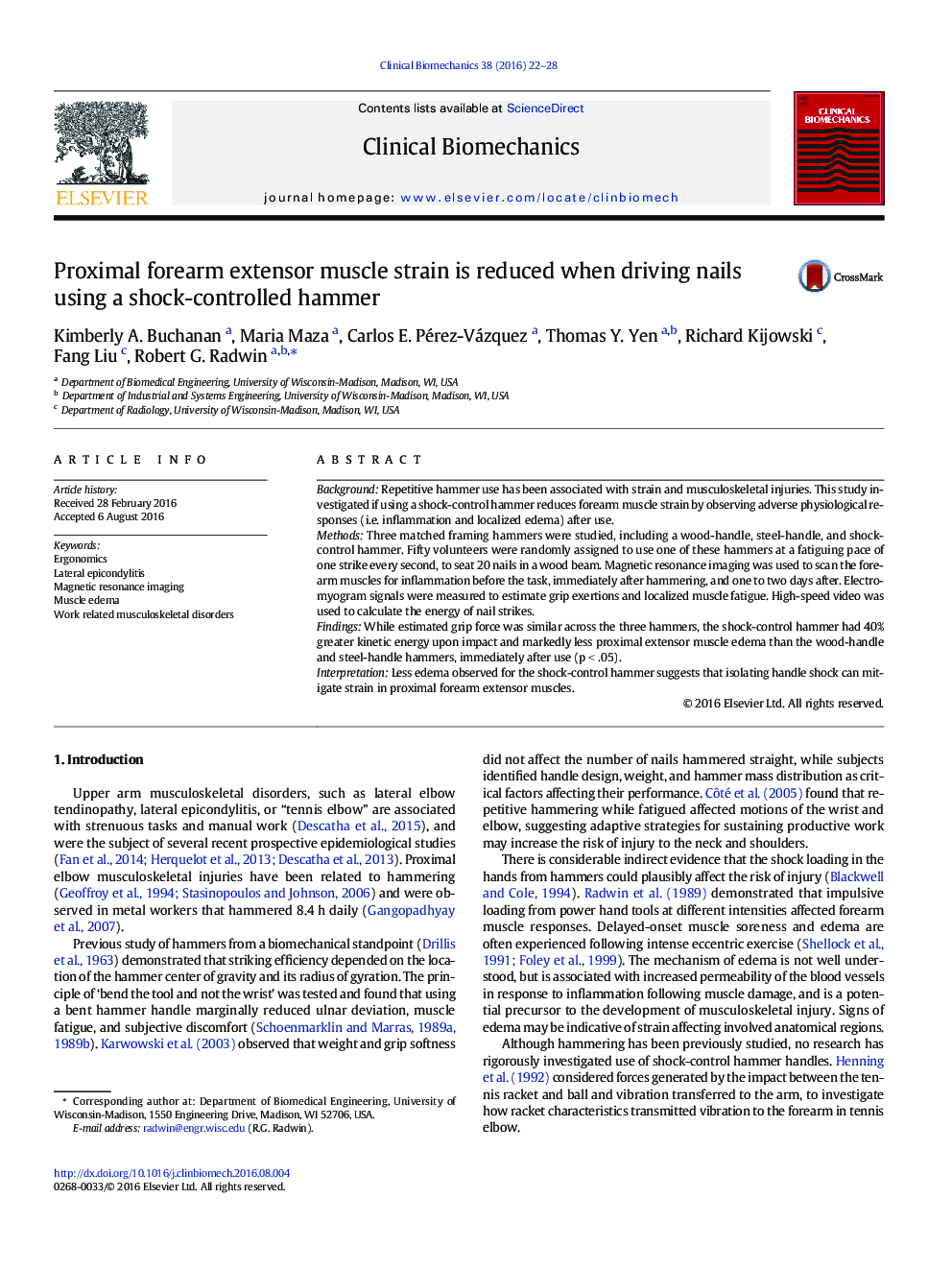| Article ID | Journal | Published Year | Pages | File Type |
|---|---|---|---|---|
| 4050053 | Clinical Biomechanics | 2016 | 7 Pages |
•The shock control hammer delivered more energy to its target.•There was no significant difference in grip force or perceived discomfort among hammers.•The shock control hammer had lower levels of edema than the wood or steel handle hammers.•Use of a shock control hammer may reduce eccentric exertions and reduce the risk of forearm musculoskeletal injuries.
BackgroundRepetitive hammer use has been associated with strain and musculoskeletal injuries. This study investigated if using a shock-control hammer reduces forearm muscle strain by observing adverse physiological responses (i.e. inflammation and localized edema) after use.MethodsThree matched framing hammers were studied, including a wood-handle, steel-handle, and shock-control hammer. Fifty volunteers were randomly assigned to use one of these hammers at a fatiguing pace of one strike every second, to seat 20 nails in a wood beam. Magnetic resonance imaging was used to scan the forearm muscles for inflammation before the task, immediately after hammering, and one to two days after. Electromyogram signals were measured to estimate grip exertions and localized muscle fatigue. High-speed video was used to calculate the energy of nail strikes.FindingsWhile estimated grip force was similar across the three hammers, the shock-control hammer had 40% greater kinetic energy upon impact and markedly less proximal extensor muscle edema than the wood-handle and steel-handle hammers, immediately after use (p < .05).InterpretationLess edema observed for the shock-control hammer suggests that isolating handle shock can mitigate strain in proximal forearm extensor muscles.
